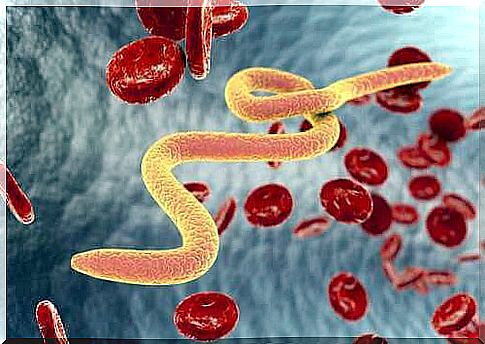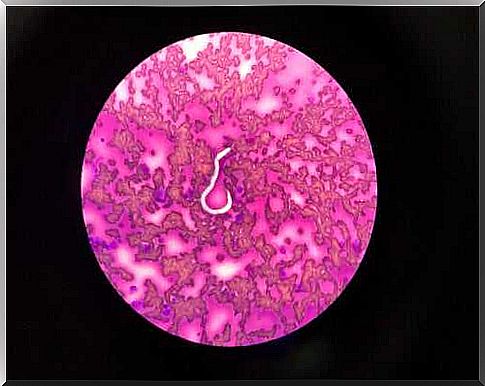Filariasis In Cats: Causes And Symptoms

The filariasis in cats is not as common and was not investigated as thoroughly as the filariasis in dogs. One of the reasons for this could be that cats are not the main host of these parasites.
In addition, in many cases cats will not have symptoms of infection or confuse these symptoms with other respiratory problems.
Nevertheless, you should definitely see your vet if you suspect filariasis in your cat. Because this is a zoonotic infection, it can be transmitted to humans as well as other animals such as dogs.
Types of filariasis
Filariasis is a group of mainly tropical diseases caused by nematodes (roundworms) belonging to the filaria family and transmitted by mosquitoes.
In addition, the disease can become chronic in countries where these infections are endemic, resulting in a population decrease considering that there are approximately 40 million people suffering from some type of chronic filariasis.
These parasites are between 17 and 100 millimeters in size in adulthood. In their larval stage, they are called microfilariae and do not grow larger than 340 micrometers, which is 0.34 millimeters.
Filariasis is divided into different types according to their morphology and the type of tissue they infect. How to find:
- Lymphatic filariasis, which affects the lymph nodes. It is caused by the species Wuchereria bancrofti , Brugia malayi and Brugia timori .
- Serous cavity filariasis. Membranes that cover the organs are attacked by the filariae Mansonella pertans and Mansonella ozzardi .
- There are also filariae that infect the skin tissue: Mansonella streptocerca and Dracunculus medinensis .
- Loa loa and Onchocerca volvulus are filariae that parasitize the subcutaneous and connective tissue. The species Loa loa is also known as the eye worm.
- In addition, there are the filariasis in cats that filariasis Canina or dirofilariosis. It is caused by the Dirofilaria immitis worm and infects the pulmonary arteries and heart. Unlike other types of filariae, dirofilariae can live in temperate zones, so they are often found in southern Europe.

Dirofilariasis and the cat as host
Filariasis is not as common in cats as it is in dogs. The incidence of infection in cats is around 5-20% compared to dogs for the same region. In fact, in locations where the disease is endemic, typically no more than 10% of individuals are affected.
As in dogs, dirofilariasis occurs in cats in the form of worms in the pulmonary artery and right ventricle.
However, far fewer worms were found in cats suffering from filariasis than in infected dogs, namely only between one and two (in exceptional cases up to 19 worms were found).
In addition, the parasites mature more slowly than in dogs and only live in the cat’s body for two years. This contrasts with the significantly longer life expectancy of the parasite that infects the dog (five or six years).
In addition, cats have far fewer microfilariae (larval form of filariae) because their immune system is very effective against these forms. It is known that 80% of cats with dirofilariae do not have microfilariae.

Symptoms of filariasis in cats
Most cats with dirofilariasis are asymptomatic. When cats show symptoms, the symptoms or clinical picture are very similar to those of dogs:
- Ascites, or fluid in the abdominal cavity
- Vascular edema
- Loss of appetite
- apathy
- Dehydration
- Occurrence of cardiac arrhythmias
- Heart failure
- Syncope
- Breathing failure or shortness of breath (dyspnoea)
- Hemoglobinuria (dark urine)
The animal’s death usually occurs suddenly and is usually caused by cardiac arrest and respiratory arrest.
This could be for a variety of reasons, such as thrombosis, which is caused by the accumulation of dead worms in the arteries. In addition, lesions that occur in the lungs or heart can also be the cause of the death of the animal.
Treatment of filariasis in cats
Under no circumstances should you give your pet medication without a prior veterinary prescription. In addition, treating filariasis in cats is different from treating the condition in dogs.
Because the drugs used to treat dirofilariasis in dogs are very hepato- and nephrotoxic, they can even be fatal to cats.
Therefore, it is recommended that cats with symptoms of this condition should rest. Corticoids are also given to relieve symptoms. Other medications can also be used if the cat has heart failure.









